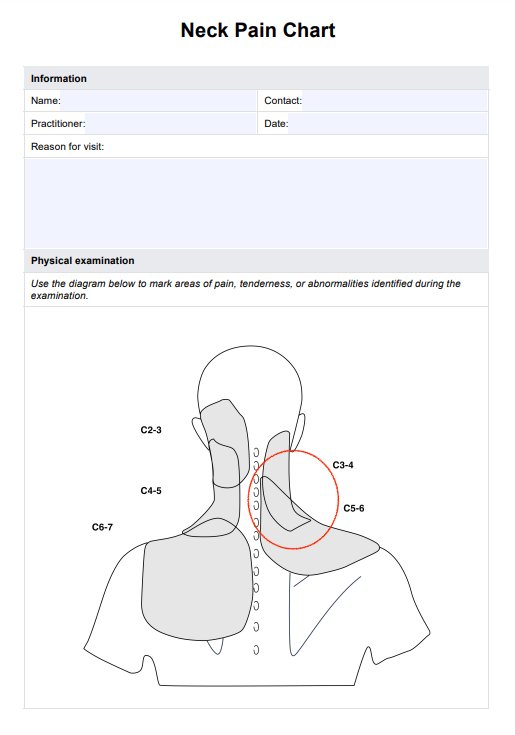The Neck Pain Chart is designed to help healthcare professionals systematically assess, document, and manage neck-related concerns. It provides a structured way to record areas of pain, tenderness, or abnormalities, along with pain levels and observations during physical examinations. This tool aids in accurate diagnosis, personalized treatment planning, and effective patient communication.

Neck Pain Chart
Access our Neck Pain Chart, a professional tool for assessing and documenting neck pain, aiding in diagnosis, treatment planning, and improving patient care.
Neck Pain Chart Template
Commonly asked questions
During the consultation, use the provided diagram to mark specific areas of pain or discomfort reported by the patient or identified during the examination. Record relevant details such as pain levels, physical findings, and any additional observations. This information creates a comprehensive overview of the patient’s condition, making it easier to track progress and guide treatment decisions.
The Neck Pain Chart is ideal for healthcare professionals, including physical therapists, chiropractors, primary care physicians, and orthopedic specialists, who manage patients with neck pain. It also benefits patients by providing a clear visual record of their condition, enhancing understanding, and improving adherence to treatment plans.
EHR and practice management software
Get started for free
*No credit card required
Free
$0/usd
Unlimited clients
Telehealth
1GB of storage
Client portal text
Automated billing and online payments











